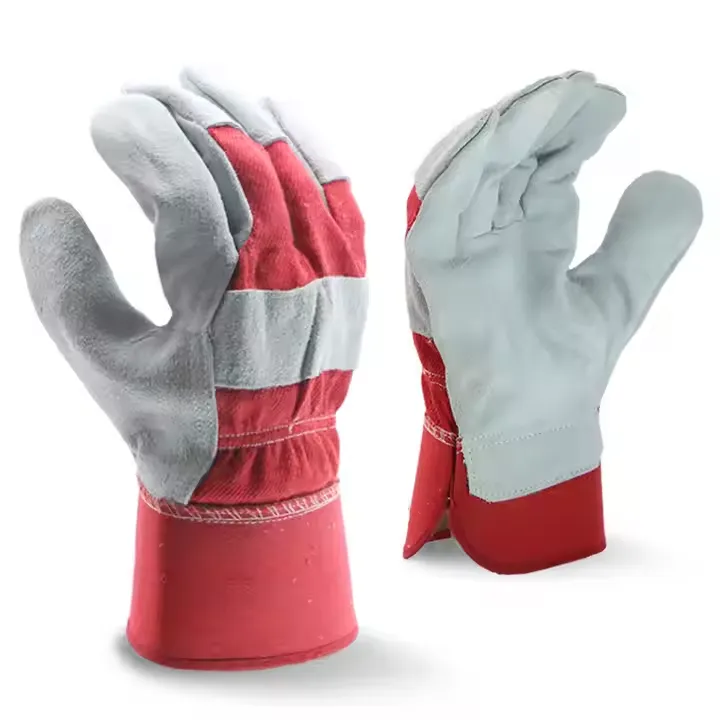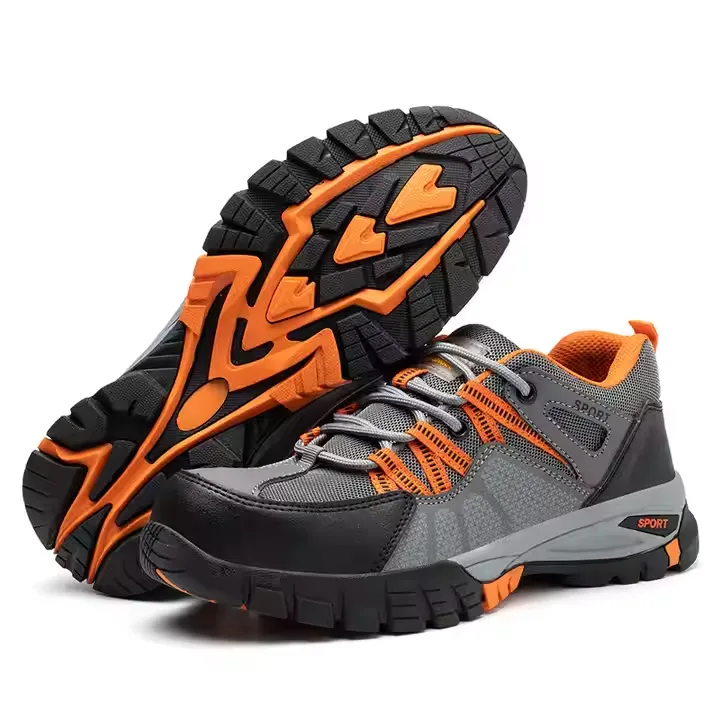In modern industrial environments, worker safety depends heavily on the quality of protective gear—especially gloves. Industrial work gloves are essential tools that protect hands from cuts, burns, chemical exposure, impact, and other occupational hazards. Whether in construction, metalworking, agriculture, or manufacturing, choosing the right gloves can significantly reduce injury rates and improve productivity.
In this article, we explore why high-performance industrial work gloves are vital, what makes them effective, and how they support workers in demanding conditions.(Related articles:Heavy-Duty Cut-Resistant Nitrile Work Gloves-Fully Coated & Ha e kene metsi)
Risk of hand injuries when not using industrial work gloves at work
Common Industrial Hazards
Hands are among the most used—and most exposed—parts of the human body during work. From handling sharp machinery to carrying abrasive materials, industrial workers face daily threats including:
Lacerations from metal and glass
Chemical burns
Punctures from nails or splinters
Abrasions from rough surfaces
Impact injuries from heavy tools
Without proper gloves, these risks can lead to time off work, long-term damage, or permanent disability.(Related articles:Light Work PU-Coated Gloves For Daily Comfort & Ts'ireletso)
Why Ordinary Gloves Are Not Enough
Many workplaces still rely on basic gloves that may offer minimal protection. Standard cotton or thin latex gloves often fail when faced with sharp, heavy, or toxic materials. Common issues include:
Easy tearing
Poor grip in wet or oily conditions
Lack of cut or puncture resistance
Hand fatigue due to poor fit
To meet today’s safety standards and keep up with productivity demands, industries are turning to high-performance industrial gloves made with advanced materials and precision design.(Related articles:A guide to the best work gloves for summer)
Key Features of High-Performance Industrial Gloves
1. Cut Resistance
Gloves designed with HPPE (high-performance polyethylene), steel fiber, or Kevlar offer ANSI A4 to A6 level cut protection. These materials prevent deep lacerations caused by blades, sheet metal, or broken glass.
2. Abrasion and Puncture Resistance
Durability is critical. Many gloves are now coated with nitrile, PU, or cow split leather to offer strong abrasion and puncture protection without sacrificing flexibility.
3. Impact Protection
Thermoplastic rubber (TPR) overlays on the back of the hand can reduce injuries from sudden impacts or heavy tool drops, common in construction and oil & gas industries.
4. Chemical Resistance(Related articles:How Does Industrial Glove Prevent Chemical Exposure?)
For workers handling solvents, oils, or acids, chemical resistant gloves made of nitrile or PVC provide a reliable barrier. Proper glove selection depends on compatibility with specific chemicals.
5. Touchscreen Functionality
Modern gloves often include touchscreen compatibility, allowing workers to operate digital devices without removing their gloves—a major productivity booster.
RiLong’s Heavy-Duty Work Gloves: A Case Example
One of the best examples of innovation in this category is RiLong’s A6/F Cut Resistant Industrial Gloves, featuring a 13-gauge knitted liner and cow split leather palm.
Construction and Materials
Liner: 13-gauge HPPE + nylon + steel fiber
Palm: Cow split leather sewn for extra strength
Protection Ratings:
Cut Resistance: ANSI A6 / ISO F
Abrasion Resistance: Level 6
Puncture Resistance: Level 4(Related articles:Best Summer Work Gloves For Men: Breathable And Protective)
Features
High cut and puncture resistance
Breathable knitted liner reduces hand sweat
Durable cow leather enhances grip
Available in sizes S to 3XL
Custom logos, colors, and packaging upon request
Industries That Benefit from These Gloves
These heavy-duty gloves are ideal for:
Kaho – Handling rebar, tools, and sharp objects
Ho etsa lihlahisoa – Working with sheet metal, plastics, or glass
Automotive – Maintenance, repair, and assembly line protection
Forestry & Agriculture – Withstanding abrasions, thorns, and splinters
Oil & Gas – High-impact tasks with exposure to rough materials(Related articles:The 5 Most Popular Safety Gloves for Summer 2025)
Real-World Benefits: Comfort, Safety & Efficiency
Enhanced Worker Comfort
A snug, ergonomic fit with breathable lining ensures workers can wear the gloves comfortably throughout long shifts—reducing fatigue and increasing focus.(Related articles:How Does Industrial Glove Prevent Chemical Exposure?)
Increased Safety Compliance
When gloves are both protective and comfortable, workers are more likely to wear them consistently, which boosts compliance and reduces incident rates.
Productivity Gains
Workers can grip tools more securely, handle small parts more accurately, and even use touchscreen devices—resulting in less downtime and fewer glove changes.
Why Choose RiLong?
With over 25 years of manufacturing experience, RiLong is a global leader in high-quality industrial gloves. Here’s what sets us apart:(Related articles:RiLong Safety at Canton Fair – Showcasing Innovation and Protection to the World)
Advanced Production Facilities: 15 production lines and 1,500 knitting machines
Skilled Workforce: 600+ trained employees
Monthly Capacity: 600,000 dozen gloves
Certified Quality: Gloves meet ANSI, ISO, CE, and EN388 standards
OEM & Customization: Logos, materials, sizes, and packaging tailored to your brand
Final Thoughts
Investing in high-performance industrial gloves is one of the smartest ways companies can reduce workplace injuries and enhance team efficiency. With superior protection and ergonomic design, gloves like RiLong’s A6/F model provide both safety and comfort.(Related articles:When Not to Use Chemical Resistant Gloves: Common Misconceptions)
Ready to upgrade your workplace safety?
📩 Contact RiLong for a free consultation or to request samples.
🌐 Visit: https://rilonggrp.com/







